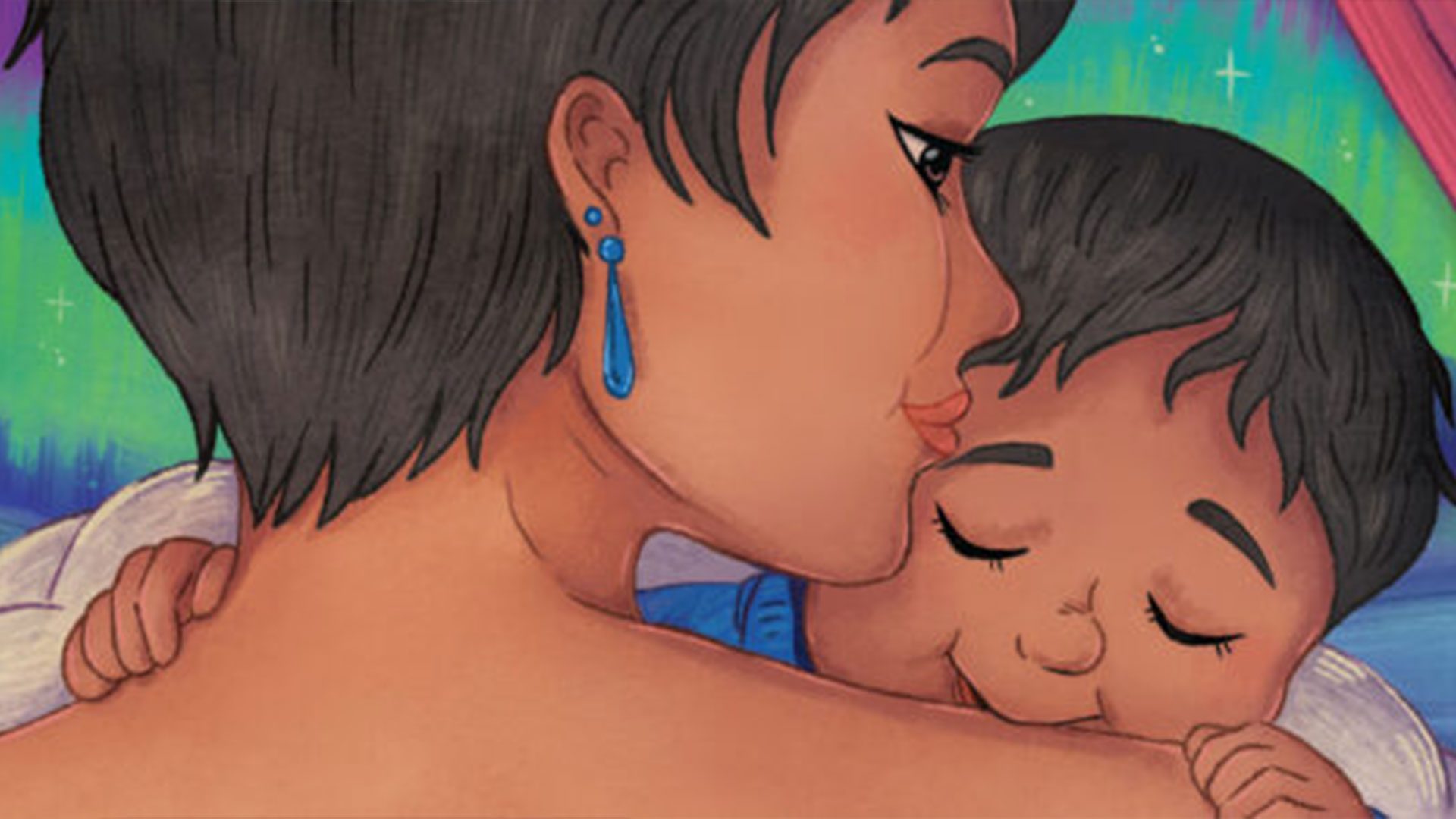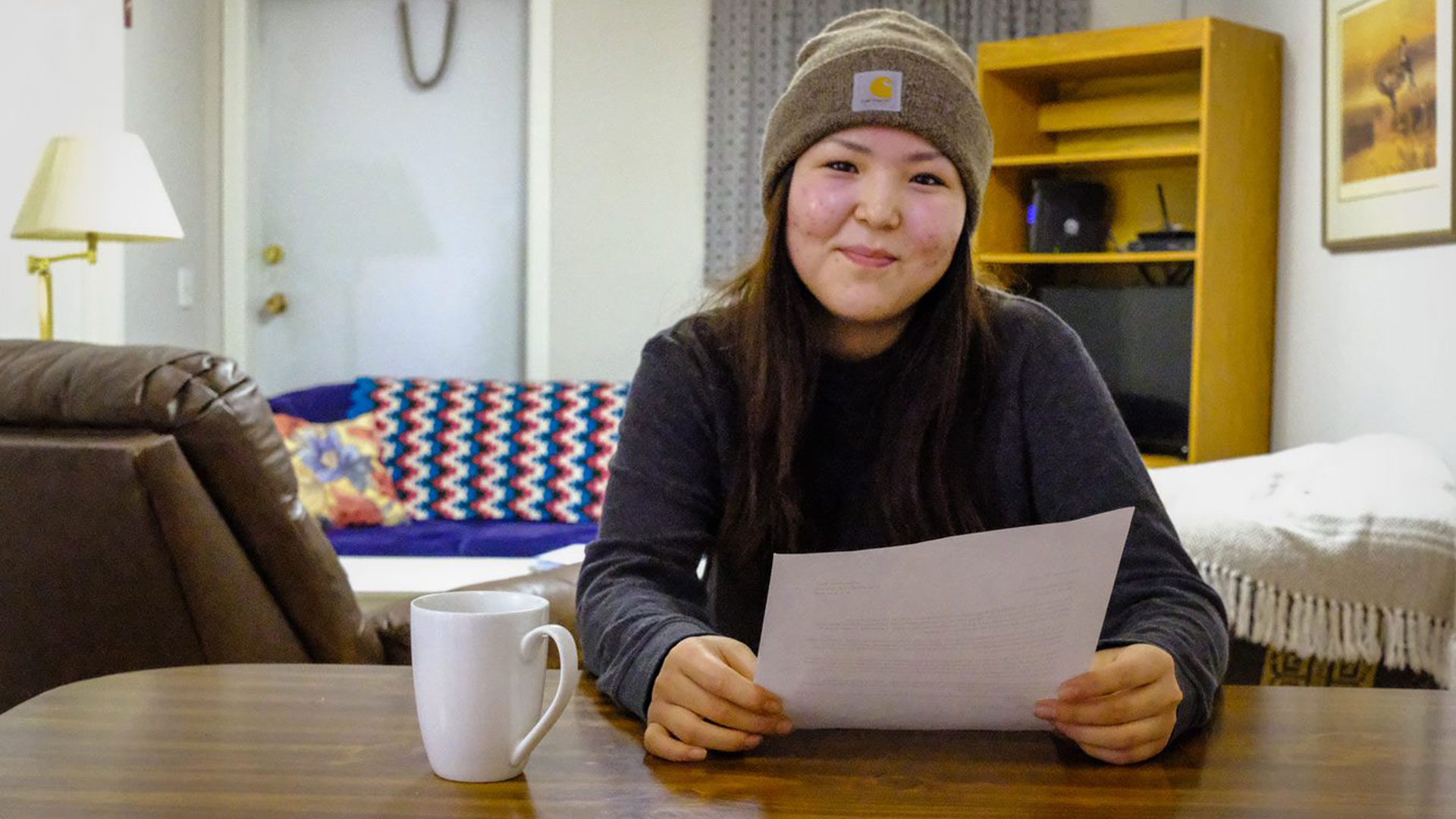Jessamine Bolt has never studied Inuinnaqtun at Kugluktuk High School.
That’s because there haven’t been any Inuinnaqtun language classes offered in years.
“As a Grade 12 student at this school I want the opportunity to learn Inuinnaqtun,” Bolt said. “If the younger generation can have Inuinnaqtun class, it will improve our knowledge and keep it from disappearing.”
Her dad is fluent, and her mum is learning and applying the language. Bolt recognizes the urgency to protect familial ties by practicing in all settings, including school.
“Elders may feel hurt that the next generation is not being educated in the language and we are losing our language rapidly and consistently,” she said.
As part of her Grade 12 English class this winter, Bolt wrote a persuasive letter and implored the school to offer the local dialect.
“We could do more to talk our language and I hope something gets done about it because it was just an assignment that first but now it’s like I feel like it’s something for now,” Bolt said.
The roughly 1,600-person hamlet of Kugluktuk, the most western community in Nunavut, has deep roots in the Inuinnaqtun language. But it’s the most endangered Inuktut language in the territory – a dialect that could be extinct in less than two generations.
“It’s really weird that there’s no classes here because, it’s our first language and offering a course would be an effective way to help heal intergenerational trauma,” said Alisha Milton, who also advocated through letter writing.
The Grade 12 student has lived in Kugluktuk since 2019 but originally hails from Pond Inlet, Nunavut – 1,500 km to the northeast – and is fluent in Inuktitut.
“Language for me, I guess would be our way of communicating, and somewhat connect in a way,” said Milton. “Kugluktuk is one community who have lost their native language, while others have become to restore their language among the youth.”

According to the Kitikmeot Heritage Society, there’s less than 600 fluent speakers remaining.
The territorial Minister of Education Pamela Hakongak Gross told APTN News, veteran language instructors have retired which presented challenges for the school board.
“We’re looking to see what options are available to enhance the wage for that position and to increase that will hopefully be able to recruit more people from other professions,” Hakongak Gross said. “We know that it’s an underpaid position, comparative to other jobs.”
She noted, the department prides itself on the Nunavut teacher, education program which has expanded to 15-minute communities.
Hakongak Gross is also from the Kitkitmeot region herself and said she supported the students who wrote letters.
“I feel for what they’re advocating for, and I commend them for doing that. It’s a very honorable thing to advocate for our people and to advocate for our language,” she said.
Rosemarie Meyok is a respected inuinaq elder with nearly 50 years experience in language instruction and curriculum development.
Her children’s picture book Takuttaaqragit, or I Can See You, is written in such a way where the adult speaker is encouraged to interact and converse with the child as they absorb the language.
She said programs must have an Elder and language teacher using language in an active and functional way and students must hear the language first before comprehension.

“Not just how some teachers tend to teach language which is… the word said, and then repeated,” Meyok said. “But if they haven’t heard the language being spoken it’s hard for them to properly pronounce and understand.”
She was born in a small Hudson Bay trading post on Reid Island, N.W.T. Back then she was known by the name Ava and spoke Inuinnaqtun until she was forced to attend String Hall Residential School in Inuvik, N.W.T.
The institution tried to strip her of her name and her language.
“When I came back one summer, from residential school, A relative called me by my name Ava and I said, ‘no, that’s not my name, it’s Rosemarie,’” Meyok said. “But I was named after my grandfather, we give children names of someone who has passed on so that person is reborn in that child, and they are treated as such.”

She noted that for Inuktituk to survive they need to support all dialects and not force them to assimilate.
After enduring many years in the residential school her drive to share language never faltered.
She completed a teaching diploma she began teaching the language without any materials, which led her to enroll in university for linguistics where she developed educational resources.
This is where she learned the tool of physical memorization by putting actions to language.
“For example, teaching about a specific animal, take students hunting, butchering, and drying the skin – all the actions in preparing the animal for cooking,” Meyok said. “It may take a while but labeling and developing words and sentences from the space start from basic words to two basic phrases.”
Read More:
People in Kugluktuk opening up about love, challenges of living in Arctic
Nunavut community hopes pre-employment course helps put people to work
Both Bolt and Milton plan to continue in post-secondary education, and while they missed out on studying Inuinnaqtun in high school, their calls to action have been heard.
A language instructor has finally been hired this January.
“It’s in our blood and now we just I feel like it’s important so that we don’t lose the values of life in a way,” Bolt said.









